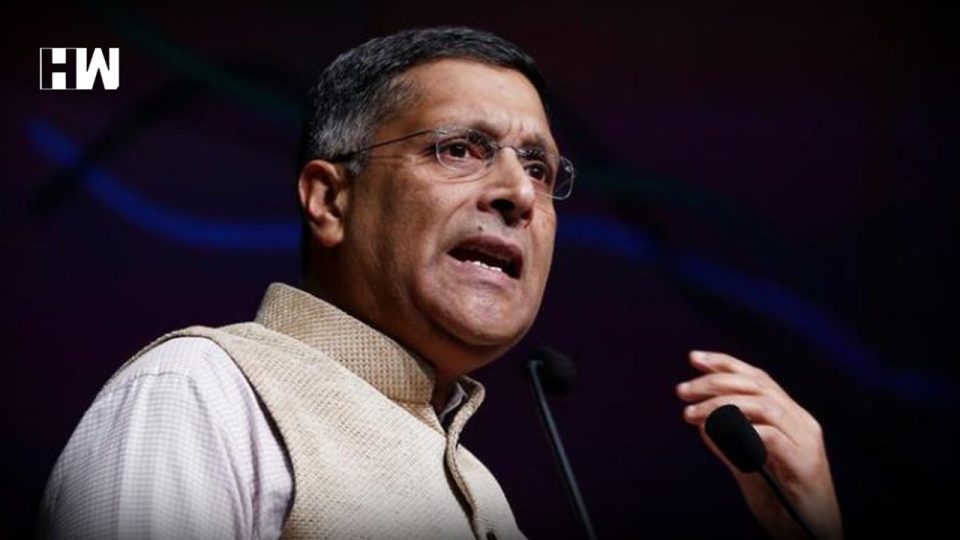“It is India’s Great Slowdown, where the economy seems headed for the intensive care unit,” Arvind Subramanian said
Former Chief Economic Adviser Arvind Subramanian has said that the Indian economy is currently experiencing a “second wave” of the Twin Balance Sheet (TBS) crisis, which is behind what he terms as a “Great Slowdown”.
“Clearly, this is not an ordinary slowdown. It is India’s Great Slowdown, where the economy seems headed for the intensive care unit,” Subramanian has said in a draft working paper of the Harvard University’s Centre for International Development.
Subramanian had flagged the TBS problem of debts accumulated by private corporates becoming non-performing assets of banks back in December 2014, while he was CEA to the Narendra Modi government.
In his new paper co-authored with the former head of the International Monetary Fund’s India office Josh Felman, Subramanian, who now teaches at the Harvard Kennedy School, has made a distinction between the original TBS and “TBS-2”.
TBS-1 was about bank loans made to steel, power, and infrastructure sector companies during the investment boom of 2004-11 turning bad. TBS-2 is largely a post-demonetization phenomenon involving non-banking financial companies (NBFCs) and real estate firms. After demonetization, considerable amounts of cash made their way to banks, who on-lent a major part of that to NBFCs. The NBFCs, in turn, channeled this money to the real estate sector. By 2017-18, NBFCs were accounting for roughly half of the estimated Rs 5,00,000 crore of outstanding real estate loans.
According to Subramanian, the collapse of IL&FS in September 2018 was a “seismic event” not only because of the Rs 90,000 crore-plus debts of the infrastructure-cum-lending behemoth, but also its “prompting markets to wake up and reassess the entire NBFC sector”.
What the markets discovered was profoundly disturbing. A lot of NBFC lending in the recent period was concentrated in one particular industry real estate which itself was in a precarious situation. At the end of June 2019, the total number of unsold houses/flats in the top 8 cities was almost 10 lakh, valued at Rs 8 lakh crore or equivalent to about 4 years of sales.
Once the extent of their exposure to real estate became known after IL&FS went belly-up, banks, as well as mutual funds, virtually stopped lending to NBFCs. “In some ways, this may have been India’s version of the US housing bubble,” Subramanian and Felman argue.
Worse, it has created a new wave of stress for banks, some of whose credit to NBFCs amount to 10-14 percent of their loan books. With banks turning cautious on top of fund-starved NBFCs that had emerged as a key source of lending for small businesses and consumer durable purchases in the post-demonetization period flow of commercial credit has collapsed from a peak of Rs 20 lakh crore in 2018-19 to “virtually nothing” in the first six months of this fiscal.
Subramanian and Felman say that India is now facing a situation of an unresolved legacy TBS problem along with a fresh TBS-2 crisis, both of which have pushed the economy into a downward spiral. “High rates and little credit are causing the economy to slow, thereby intensifying the stress on the corporate sector and on the financial system itself, “which then prompts the financial sector to become even more cautious”.
Also Read: Nitin Gadkari blames slowdown in auto sector on global economy
The current slowdown, they note, is worrisome not just because GDP growth has slowed down to 4.5 percent in the second quarter of 2019-20. Even more distressing is the disaggregated data. “The growth of consumer goods production has virtually ground to a halt; production of investment goods is falling. Indicators of exports, imports, and government revenues are all close to negative territory. These indicators suggest the economy’s illness is severed slowdown seems closer to the 1991 balance of payments crisis,”, they add.
As an independent media platform, we do not take advertisements from governments and corporate houses. It is you, our readers, who have supported us on our journey to do honest and unbiased journalism. Please contribute, so that we can continue to do the same in future.

